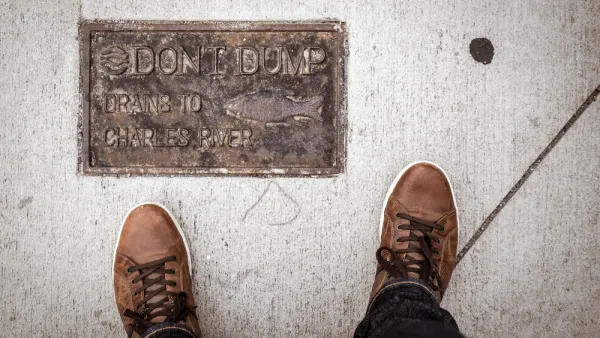Because of President-elect Obama’s plans to spend billions of dollars on infrastructure, some recent discussion of smart growth has focused on proposals for huge projects, such as rebuilding America’s rail network. But walkability often depends on much smaller steps, steps that require changes in tiny increments of space.
Because of President-elect Obama's plans to spend billions of dollars on infrastructure, some recent discussion of smart growth has focused on proposals for huge projects, such as rebuilding America's rail network.
But walkability often depends on much smaller steps, steps that require changes in tiny increments of space.
For example, take a typical tree-lined, upper-class suburban neighborhood, such as the fancier blocks of Atlanta's Buckhead. A four-foot wide sidewalk, although not ideal, can make such a neighborhood very pleasant and walkable. (For an example, see http://atlantaphotos.fotopic.net/p14704743.html )
Now substitute a strip of lawn for the sidewalk. (For examples, see http://atlantaphotos.fotopic.net/p44263562.html and http://atlantaphotos.fotopic.net/p14008023.html ) The neighborhood is not so inviting to pedestrians; although it is certainly possible to walk on this strip of lawn, the lawn can be muddy in rough weather, and a pedestrian might feel uncomfortable walking on something that is not obviously public space. Nevertheless, a city that cannot afford to build new sidewalks would be well advised to encourage homeowners to allow a small easement on their lawn for pedestrians, since the lawn strip is better than the alternative, which is
Nothing. In much of Atlanta, homeowners allow trees and bushes to go right up to the street, rather than flanking the street with lawns. (For an example, see http://atlantaphotos.fotopic.net/p14010314.html ) As a result, pedestrians must walk on the street, sharing that street with vehicles.
In sum, the fate of one or two strips of land just four feet wide makes the difference between a reasonably walkable residential street, a somewhat pedestrian-unfriendly street, and a street that virtually excludes pedestrians.
Even in the latter situation, a few feet makes a difference between the worst possible street and a merely bad one. On many sidewalk-less residential streets, cars go 40 miles per hour, creating a very risky situation for pedestrians. By contrast, when I visited my parents' vacation house in the mountains of North Carolina, people routinely hiked in the middle of the street. Why? Because the street was narrow enough that vehicle traffic was relatively slow, thus allowing pedestrians to reclaim the street to some extent. Again, a few feet made a big difference.

National Parks Layoffs Will Cause Communities to Lose Billions
Thousands of essential park workers were laid off this week, just before the busy spring break season.

Retro-silient?: America’s First “Eco-burb,” The Woodlands Turns 50
A master-planned community north of Houston offers lessons on green infrastructure and resilient design, but falls short of its founder’s lofty affordability and walkability goals.

Delivering for America Plan Will Downgrade Mail Service in at Least 49.5 Percent of Zip Codes
Republican and Democrat lawmakers criticize the plan for its disproportionate negative impact on rural communities.

Test News Post 1
This is a summary

Test News Headline 46
Test for the image on the front page.

Balancing Bombs and Butterflies: How the National Guard Protects a Rare Species
The National Guard at Fort Indiantown Gap uses GIS technology and land management strategies to balance military training with conservation efforts, ensuring the survival of the rare eastern regal fritillary butterfly.
Urban Design for Planners 1: Software Tools
This six-course series explores essential urban design concepts using open source software and equips planners with the tools they need to participate fully in the urban design process.
Planning for Universal Design
Learn the tools for implementing Universal Design in planning regulations.
EMC Planning Group, Inc.
Planetizen
Planetizen
Mpact (formerly Rail~Volution)
Great Falls Development Authority, Inc.
HUDs Office of Policy Development and Research
NYU Wagner Graduate School of Public Service





























